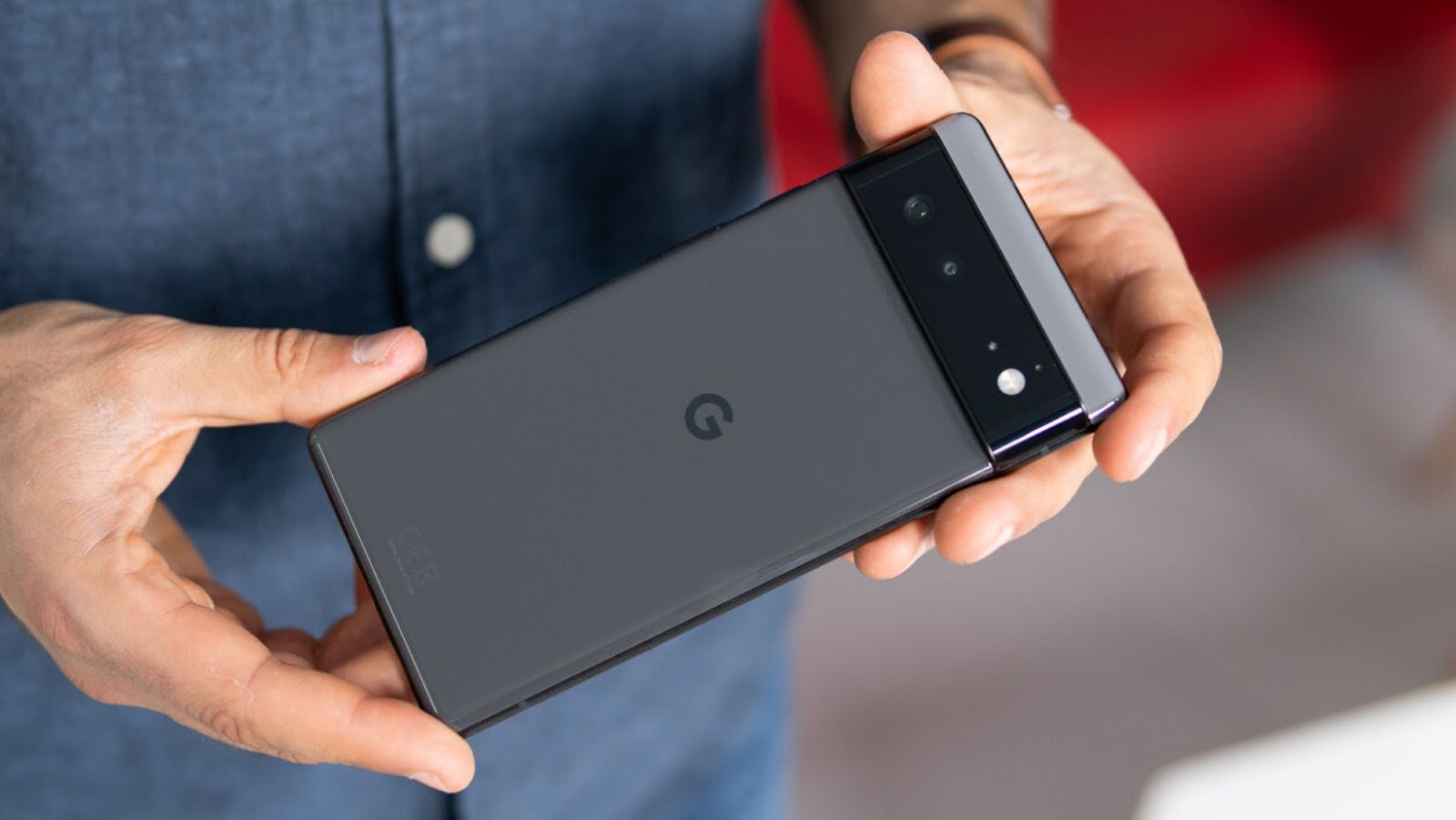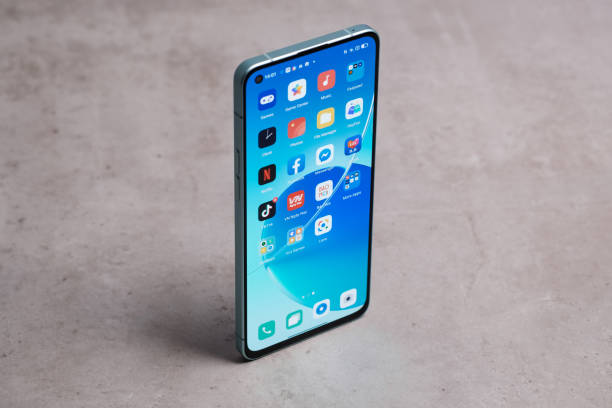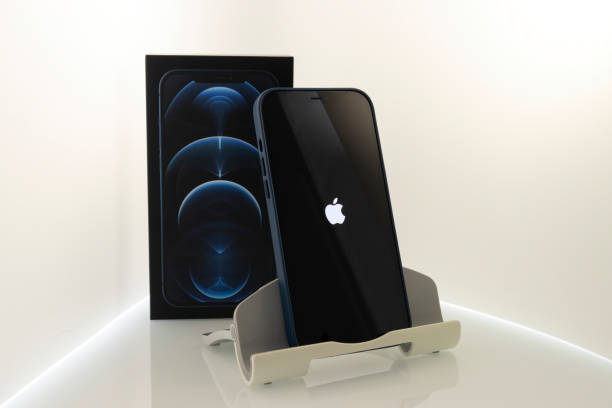
The Google Pixel 6 will reportedly come with an OLED display, whereas its predecessor, the Pixel 5, features an LCD screen. OLED displays generally offer better contrast ratios, deeper blacks, and wider viewing angles than LCD displays. This means that the colors on an OLED screen appear more vibrant and true to life, especially in dark scenes. Additionally, OLED displays use less power overall compared to LCD displays, which translates to better battery life on your device. It’s important to note that the display technology is just one aspect of a phone’s overall performance, so while OLED displays are generally considered superior, it doesn’t necessarily mean that the Pixel 6 will outperform the Pixel 5 in all aspects.
What is OLED Display?
OLED stands for organic light-emitting diode and is a type of display technology used primarily in the new Google Pixel 6 and 7 smartphones.
OLED is different from its predecessor, LCD (liquid crystal display), in that it produces its own light, resulting in better image quality, vibrant colors and darker blacks.
In this article, we will look at the differences between OLED and LCD in more detail.
Advantages
OLED (Organic Light Emitting Diode) displays offer several advantages over traditional LCD (Liquid Crystal Display) screens, particularly in the context of the Google Pixel 6 display.
Advantages of OLED Display:
1. Higher Contrast Ratio: OLED displays have a higher contrast ratio than LCDs. This means that the blacks are deeper and the colors are more vibrant and accurate.
2. Better Color Accuracy: OLED displays are capable of producing true blacks and more accurate colors, making images and videos look more realistic and immersive.
3. Lower Power Consumption: OLED displays consume less power than LCDs because each pixel emits its light rather than being backlit by a separate source.
4. Thinner and More Flexible: OLED displays are thinner, more flexible, and more adaptable than LCDs, making them ideal for curved screens and other non-flat applications.
In the context of the Google Pixel 6 display, the advantages of OLED technology are particularly relevant, as they contribute to the device’s improved battery life, enhanced color and contrast, and sleek, modern design.
Disadvantages
OLED displays, despite being high-quality screens with vibrant and clear visuals, have a few potential disadvantages worth knowing about when comparing them to LCD displays. One of the main disadvantages of OLED displays is their tendency to suffer from burn-in, where images that remain on the screen for long periods cause permanent damage to the pixels. Additionally, OLED displays can be more expensive to manufacture, which can translate to higher costs for the end consumer. Another potential disadvantage of OLED technology is that it may not perform as well in direct sunlight as LCD screens, making it more difficult to read in outdoor settings. Lastly, OLED displays may have a shorter lifespan than LCD displays, which may necessitate replacement sooner.
While OLED displays are without a doubt an excellent option for consumers seeking the highest quality viewing experience, it’s important to weigh these drawbacks against their benefits.
What is an LCD Display?
LCD, or Liquid Crystal Display, is a type of display technology used in televisions, computer monitors, and even smartphones. It works by using a matrix of pixels that are powered by a combination of polarizers and liquid crystals to produce images on a display.
Let’s take a closer look at how this technology works and how it differs from OLED technology.
Advantages
An LCD (Liquid Crystal Display) screen is a type of flat-panel display used in modern electronic devices such as smartphones, televisions, and computer monitors. Compared to OLED (Organic Light Emitting Diode) displays, LCD displays have a few distinct advantages. One of the biggest advantages of LCD displays is their lower cost compared to OLED displays. This makes them a popular choice for budget-friendly devices. LCD displays are also thinner and lighter compared to traditional CRT (Cathode Ray Tube) displays, making them ideal for portable devices like smartphones and tablets. Additionally, LCD displays are less prone to burn-in, a condition where persistent images can get imprinted on the screen over long periods of use, which is more common in OLED displays. However, LCD displays have lower contrast ratios, which can affect the image quality. The Google Pixel 6 uses an OLED display, while its predecessor, the Google Pixel 5, uses an LCD display. The OLED display offers better contrast, deeper blacks and consumes less power than an LCD display, providing a more immersive and power-efficient experience.
Disadvantages
LCD displays have certain disadvantages when compared to OLED displays. LCD stands for Liquid Crystal Display and it works by blocking light to create on-screen images. The Google Pixel 6 was released with an OLED display while its predecessor, the Pixel 5, had an LCD display. OLED displays offer several advantages such as deeper blacks, better contrast, and faster refresh rates. In comparison, LCD displays tend to have lower contrast ratios, less vibrant colors, and more limited viewing angles. This makes it harder to view the screen from different angles. Moreover, LCD technology also requires a separate backlight panel to illuminate the display, which makes it thicker and more power-consuming than OLED displays.
Although LCD displays remain popular in the entry-level and mid-range smartphone market, high-end devices, such as the Google Pixel 6, are now opting for OLED displays for better visuals and user experience.

Google Pixel 6 Display: OLED vs LCD
When it comes to the Google Pixel 6 and 7, the choice between OLED and LCD displays can be a deciding factor in which one you choose. A good display is important for a great user experience and it will also be a key feature in the next flagship from Google.
To help you understand the difference between them, let’s take a look at the pros and cons of OLED and LCD displays in the Google Pixel 6.
Features of Google Pixel 6 Display
The Google Pixel 6 comes with a 6.4-inch AMOLED display, while the Google Pixel 6 Pro has a 6.7-inch AMOLED display. Both displays feature a high refresh rate of 90Hz and Gorilla Glass Victus protection. OLED displays have better contrast ratios and deeper blacks than LCD displays. They can also display more vibrant colors. In comparison, LCD displays have better brightness levels and are more power-efficient. The Google Pixel 7 is not yet released, and there is no official information available on its display features. However, it is expected to come with an improved version of the Pixel 6’s display. Choosing between OLED and LCD displays ultimately depends on personal preference and usage requirements.
Comparison of OLED And LCD display
Google Pixel 6 devices feature OLED displays, while Google Pixel 7 devices have LCD displays. OLED displays use organic materials that emit light when an electric current passes through them, allowing for brighter images, truer colors, and deeper blacks. Conversely, LCD displays use a backlight to illuminate the screen, resulting in a brighter overall display, but with less true-to-life colors and blacks. OLED displays have superior contrast ratios and viewing angles, while LCD displays have a faster response time and are better suited for gaming. If you’re looking for a device with a superior display for media consumption or streaming, the Google Pixel 6 with an OLED display is an ideal choice. However, if you’re interested in gaming or need a brighter overall display, the Google Pixel 7 with an LCD display may be a more suitable option.
Pro Tip: When comparing displays, it’s essential to consider your individual needs and preferences, including how you plan to use the device and what features are most important to you.
Which One is Better: OLED or LCD?
When it comes to display technology, OLED and LCD are the two most popular types available on the market. In terms of the display on the Google Pixel 6, OLED is the better option. This is because OLED displays offer deeper blacks and brighter whites, as well as more vibrant and accurate colors than LCD displays. They also have faster refresh rates, which is essential for high-quality video playback and smoother scrolling. Additionally, OLED displays are thinner and lighter than LCD displays, making them a better fit for smartphones. While LCD displays remain popular due to their lower cost, OLED displays have become increasingly common in high-end smartphones like the Google Pixel 6. So, if you are considering a Google Pixel 6 device, you can rest assured that its OLED display will provide an optimal viewing experience.
Google Pixel 6 vs 7
The Google Pixel 6 and 7 have been launched in 2021, and these two flagships have become very popular among tech enthusiasts. One of the primary differences between the two phones is their display technology: the Pixel 6 has an LCD display while the Pixel 7 has an OLED display.
Let’s take a closer look at this difference and explore the pros and cons of each display type.
Rumored Features of Google Pixel 7 Display
As of now, there is no official news or confirmation about the features of the Google Pixel 7 display. However, there are rumors that suggest that the Google Pixel 7 may come with a new and improved OLED display technology, and an increase in refresh rate up to 120Hz. Moreover, the adaptive refresh rate of the Google Pixel 7 may vary between 1Hz to 120Hz, thus providing a perfect blend of battery life and display performance. Additionally, the support for LTPO OLED technology which allows for dynamic variable refresh rate could also be one of the possible features.
Google Pixel 6, on the other hand, has a standard OLED display with a 90Hz refresh rate. However, without an official announcement from Google, it is difficult to comment on the exact features of the Google Pixel 7 display.
Expected Differences From Google Pixel 6 Display
As of now, there have been no official announcements from Google regarding the Google Pixel 7 Display. However, based on the current trends in smartphone displays, it is likely that the Pixel 7 will feature an OLED display instead of an LCD one. The current Google Pixel 6 already features an OLED display that provides better contrast, more vibrant colors, and deeper blacks compared to an LCD display. OLED panels also have the advantage of being more power-efficient since they do not require a backlight to function. This means that the battery life of the Pixel 6 is likely to be longer compared to a device with an LCD panel.
With the Pixel 7, it is possible that Google will continue to refine and improve the OLED technology used in the Pixel 6, resulting in even better display quality and battery efficiency.
Potential Display Changes For Google Pixel 8
As of now, there is no official information on any potential display changes for the Google Pixel 8. However, looking at the trends from the previous models, it is expected that Google would continue with the OLED panel in Google Pixel 8 as they did in Pixel 6 and Pixel 7. The major difference between the displays of Pixel 6 and Pixel 7 is that Pixel 6 uses a centered hole-punch display with a high refresh rate of 90Hz, whereas, Pixel 7 has a left-aligned hole punch with a refresh rate of 60Hz. OLED displays have a higher quality display than LCD displays. Due to OLED technology, each pixel emits its light, so black pixels appear to be completely black, which is not the case with LCD displays. However, OLED panels significantly increase the cost of production. Hence, it’s possible that Google may opt for an LCD panel if they want to keep the cost low. In summary, Google would likely continue with an OLED panel for the Pixel 8 based on the previous trends. Nonetheless, future confirmation from Google is expected on this matter.
Which Display is Right For You?
The Google Pixel 6 and 7 are two of the most popular smartphones on the market. Both devices have a range of features, but the display is one of the key differences between them. Choosing between OLED and LCD displays depends on a range of factors.
Let’s explore this further by looking at the pros and cons of each display type for the Google Pixel 6 and 7.

Considerations Before Choosing OLED vs LCD
Making a decision between OLED vs LCD is an important consideration when purchasing a new smartphone such as the Google Pixel 6 or 7. Here are a few things to consider before choosing which display technology is right for you. OLED displays have better color accuracy, deeper blacks, and higher contrast ratios compared to LCD displays. They achieve better energy efficiency by turning off individual pixels when displaying black or dark colors, resulting in longer battery life for your device. On the other hand, LCD displays are typically less expensive and offer higher brightness levels and better outdoor visibility. They also consume less power when displaying brighter colors or images. When it comes to choosing between OLED and LCD displays for your smartphone, consider your usage habits, the amount of time you spend outdoors, your budget, and the specific features you prioritize in a smartphone.
Factors Determining Best Display For Your Needs
Choosing the right display for your needs is crucial when it comes to selecting a smartphone. When comparing the Google Pixel 6 and Pixel 7 phones, you need to consider certain factors that determine the best display for you- OLED vs LCD.
The Pixel 6 comes with an OLED display, making it ideal for media consumption, gaming, and photography.
On the other hand, LCD displays are known for their affordability and energy efficiency. LCD displays are not as color accurate as OLED displays but are more than suitable for everyday use, browsing the web, and checking emails. The Pixel 7 uses an LCD display, making it ideal if you’re on a budget or looking for a more energy-efficient display. Ultimately, the right display for you will depend on your personal preferences, usage, and budget. Consider your options and choose the display that best meets your needs.
Pro Tip: Don’t rely solely on the display specifications when making a decision. Always check out the phone in person to see how the display looks in the real world.
Conclusion: Making The Best Decision For You
When choosing between the OLED and LCD display options for the Google Pixel 6, it’s important to consider your personal preferences and usage. OLED displays offer deeper blacks, higher contrast ratios, and wider viewing angles, making them ideal for watching videos and viewing photos. They also consume less battery and offer a smoother and more responsive experience compared to LCD displays. On the other hand, LCD displays are more affordable, offer brighter displays better suited for outdoor use, and have a longer lifespan. Ultimately, the choice between the OLED and LCD display options for the Google Pixel 6 comes down to personal preference and budget. If you’re someone who prioritizes the visual experience and doesn’t mind paying a premium, OLED is your best bet. However, if you’re looking for an affordable display option with better outdoor visibility and long-term durability, LCD is a great option.
Pro tip: Consider your usage patterns and budget before deciding on a display option for your Google Pixel 6.












